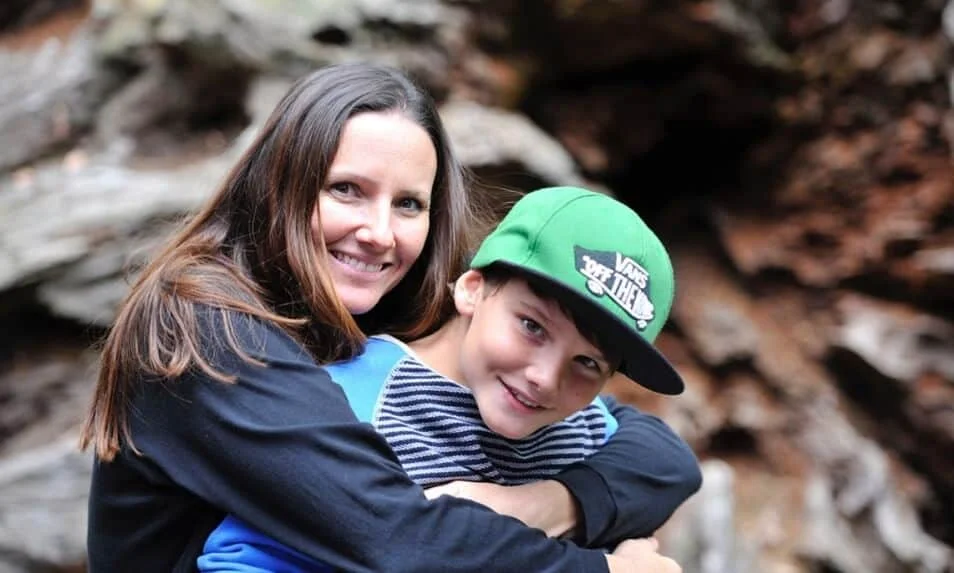If you’re reading this, I’m going to make two assumptions about you:
First, you’re a parent, about to become one, or you know a parent. And second, you are an engineer ― a building engineer, to be specific.
Okay, my second assumption might seem way off, but it ties perfectly into what scaffold parenting is about.
Think about it this way: Parenting is a lot like construction engineering, where the “project” to be completed is a human.
Like qualified building engineers, parents must use the right equipment, construction materials, and tools to design and build well-rounded children.
Most parents know that care and parental support are two core construction materials in parenting. However, there’s a thin line between supporting and caring for your child and excessive worrying and controlling when raising resilient children.
Unfortunately, many parents cross this line without realizing it.
Ever heard of helicopter parenting? It’s a classic example of misinterpreting care and support as overprotectiveness or controlling behavior.
If you want to raise secure, resilient, and independent kids without being a controlling parent, this article is for you. I’ll explain what scaffold parenting is, its unique characteristics and how to implement the unique parenting style (if that’s something you want to do).
What Is Scaffold Parenting?

In construction, a scaffold refers to any temporary platform supporting construction workers when working above the ground. It also makes it easier for the work crew to access the building, repair, and maintenance materials.
Typically, a scaffold is removed once construction is complete or a part of the building no longer requires the temporary platform. Although the platform provides a useful service, it is not meant to be a permanent feature of the building.
What has any of this got to do with raising kids?
Analogies are hardly perfect, but here’s how this relates to parenting from the scaffolding standpoint.
Think of parenting and the parent child relationship like a construction project. The parent is the building engineer (remember my second assumption earlier?), and the child is the building under construction.
Dad and mom offer support (or scaffold) in the form of care, guidance, and encouragement until the child is empowered and self-reliant. With this support, the child can easily access all the tools necessary for physical, mental, and emotional development.
Once the young child sufficiently demonstrates the capacity to support him or herself in one aspect, the scaffold is moved to other parts of the building for further construction (if necessary).
This parenting approach empowers kids to try things independently ― to go with their guts and trust their decision-making abilities ― without parents always swooping in to save the day and having to stretch their parental problem solving skills. Instead, you empower growth.
Still, the parenting approach is sensitive to children’s strengths and weaknesses and encourages kids to be open about their issues and confidently ask parents for help when they need it.
In other words, children raised under this parenting style in early childhood are more likely to face life’s challenges head-on into adulthood, with the benefit of knowing that mom and dad will always have their backs if they ever need help.
Although all of this seems easy enough in theory, many parents find it hard to step aside and let kids work their way through struggles. As parents, we often rush in to fix the problem when something goes wrong with our kids.
The reason for this is simple: we are conditioned to play the protector and fixer roles. The problem with being a fixer is that you rob kids of the chance to learn important life lessons.
If you must raise self-reliant and secure kids, you must be willing to back off and let them have their own experiences. Of course, this should be done according to the various stages of development ― when the child can handle age-appropriate challenges.
Remember, you can’t always shield your child from all life’s trials, but you can arm them with the tools they need to face life confidently by erecting a scaffold of love and care to help them grow.
A scaffold helps the construction crew reach heights they normally wouldn’t be able to reach. That’s exactly what parents are expected to do for their kids using this parenting approach.
In a nutshell, scaffold parenting means providing kids with structure, guidance, and encouragement to help them develop into resilient and independent individuals.
Elements of Scaffold Parenting

Raising resilient and secure kids starts with getting a good grasp of the five scaffolding characteristics. These are:
1. Empathy
Kids can easily feel lost, abandoned, and confused when bearing the consequences of their mistakes alone. Although mistakes are essential to learning and can’t be avoided when growing up, kids are more likely to think of mistakes as a constructive learning process if parents demonstrate empathy.
With scaffold parenting, parents need to show understanding when children make mistakes. Let your kids know that you were once in their shoes and you understand their perspective.
You don’t want your kids to think that your love and support are conditional ― you’ll be there for them only if they behave.
Instead, you want your children to know that they have your support no matter what. Remember to communicate your unconditional support both in words and actions.
While empathy won’t erase the consequences of mistakes, it can ease the pain for kids, knowing they don’t have to experience abandonment while dealing with the discomfort of their missteps.
2. Validation
Everyone appreciates a little validation, including kids. However, many parents are quick to point out errors or fear that kids will overstep their boundaries if given too much praise.
Here’s the thing, though.
Validation helps a young child to be more successful at whatever they do. Even when they make mistakes or have a hard time making appreciable progress, a good way to motivate them is by offering positive feedback about their effort.
It is normal for kids to get frustrated easily. But by validating their efforts, parents can help children cultivate resilience.
Instead of harsh criticism and negative comments when a child isn’t finding success, scaffolding encourages parents to acknowledge the child’s effort. This builds perseverance in children, teaching them the value of never giving up when faced with adversity.
3. Intervention
A fixer is a helicopter parent ― always solving problems for the child and denying them many learning opportunities.
On the other hand, scaffolding requires parents to only step in and assist the child as a collaborator, not a fixer.
An effective scaffold aims not to do things for your child but to help your child develop the capacity to pause and see things from a different perspective. This is especially useful when the child faces difficult or frustrating situations.
The child is likely to grow into a secure individual who is not afraid to ask for help when they need it. This is a more confident child than one who relies on their parent or others to help them complete their tasks now and into adulthood.
4. Structure
Structure in effective scaffold parenting refers to schedules and routines. Teaching kids about order in life starts with establishing and following regular schedules.
Daily routines reduce anxiety and remove uncertainty as the child knows what to expect. However, ground rules shouldn’t be too restrictive that they squelch the child’s desire to take healthy risks.
You want to raise confident kids who can make sound decisions, not robots who must always stick with specific programming, no matter what.
In other words, the scaffolding approach to good parenting lets you put appropriate structure in place to promote a sense of security in children as they take calculated risks and minimize mistakes. Make sure there are consistent rules and offer positive reinforcement.
5. Encouragement
Children can stall when they experience setbacks, and that’s normal. But parents can help them bounce back from failure by cheering them on, regardless of any negative experience.
However, rather than giving a general compliment, scaffolding emphasizes the need to offer specific encouragement targeting a particular trait.
Children will regain their confidence if parents learn to express belief in their abilities.
What Are the Benefits of the Scaffold Effect on Child Development?

Why should you consider adopting the scaffolding approach to parenting? What makes it stand out from other types of parenting?
There are a number of benefits to using the scaffolding method. Here are a few:
- Promotes independent learning: Children can try new things on their own for the sheer experience rather than the outcome. This encourages kids to learn from mistakes and do better next time.
- Reduces uncertainty and anxiety: It is normal for kids to feel anxious or confused when learning something new, especially if they have to step outside the perceived limits of their capabilities. Scaffolding ― the right guidance and support ― can help reduce the anxiety in kids so they can attempt the seemingly impossible.
- Builds confidence: One of the best ways to improve confidence in kids is by letting them figure out ways to complete age-appropriate tasks and solve problems (with the parent’s assistance, of course). It makes them more capable people as they grow.
- Engages kids and encourages sound decisions: The scaffolding process creates a sense of inclusiveness in kids. This helps them make sound decisions, regardless of peer pressure.
How to Implement Scaffold Parenting
Talk, they say, is cheap.
Just about anyone can read and easily understand the scaffolding approach to parenting as well as all the appealing benefits it offers. But implementing the strategy in your family is where the rubber meets the road.
To help you with this, here are a few suggestions you might want to consider when applying scaffolding in raising younger and older kids.
- Avoid solving problems for kids, even when they are frustrated. Instead, demonstrate the solution and allow the child to follow suit.
- Allow your child to try things on their own before offering to help.
- Offer suggestions on how to solve a problem when your child appears frustrated.
- Break tasks into small steps to help your child accomplish big things.
- Avoid finishing a task for your child. Instead, work on solving the problem together.
- Be specific when you praise your child’s efforts.
- Allow older children to take healthy risks. For example, let them pay their bills themselves when they go to college. Avoid doing it for them.
- Gently remind older kids about what’s important in life. Back off and let them be once they prove they can be responsible youngsters.
Is Scaffold Parenting Right for Your Family?

From the discussion so far, it is apparent that raising self-reliant and confident kids isn’t just about working on your children.
In addition to helping the child’s development, scaffold parenting requires parents to unlearn unhelpful parenting methods, overcome their weaknesses, and become better adults and role models to their kids.
As you probably already figured, this parenting strategy requires a lot of patience and consistent practice. Also, the approach calls for emotional presence and intentionality on the part of parents.
Here’s something else to keep in mind.
The scaffolding approach to parenting is a long-term endeavor, so you may not notice significant behavioral changes in your child in the short term.
I’m not pointing out any of these to discourage you. Instead, I aim to prepare your mind for what to expect if you implement this parenting strategy.
Whether or not you choose to use the scaffolding method is entirely up to you. However, the results are appealing in theory as well as in the real world. Your kids will grow up to feel empowered and confident in their abilities.
That said, the scaffold approach to parenting might not be right for you if you want a behavior modification strategy with near-instant results.
The authoritarian parenting style might be what you’re looking for if you want overnight outcomes. But remember that authoritarian parenting usually has many downsides, especially as it can erode kids’ self-esteem and make them more dependent on their parents for every decision, including minor ones.
Want to learn more about parenting styles? I invite you to read this post and discover the effects of various parenting methods on children.




